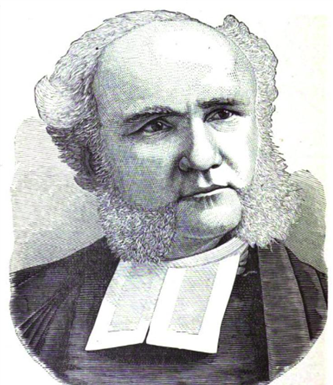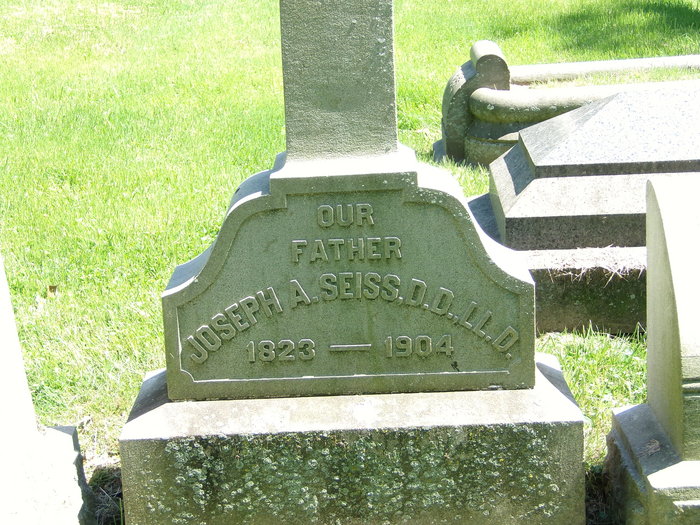Hymn History: Fairest Lord Jesus & Translator: Joseph Augustus Seiss
“His contemporaries described him as ‘an eloquent pulpit orator’ and said his ‘style is clear, ornate, attractive, and forcible.’”
(Wikipedia)
The Origin of the Hymn “Fairest Lord Jesus”
Among the world’s most beloved hymns exalting the beauty and majesty of Christ, “Fairest Lord Jesus” holds a cherished place in Christian worship. Known also by its alternate title, “Beautiful Savior,” this hymn has crossed centuries, cultures, and denominations to become a universal song of praise. Its serene melody and tender lyrics express the believer’s adoration for Christ as the most beautiful and worthy of all beings. The origin of “Fairest Lord Jesus” is wrapped in both mystery and legend, tracing back to the devout hearts of Christians in medieval Europe.
Early Roots in the Crusader Era
The hymn’s earliest form is often linked to the pious traditions of medieval Germany. Some older hymn historians have referred to it as “The Crusaders’ Hymn,” suggesting that it may have been sung by German soldiers on their way to the Holy Land during the Crusades of the 12th or 13th centuries. While this romantic tale has endured in popular imagination, there is no solid historical evidence to support it. What can be said with more certainty is that the hymn’s origins lie in the heart of German devotional culture, where simple, heartfelt songs were used for both personal and communal worship.
The earliest known appearance of the text was not during the Crusades but several centuries later. The hymn first appeared in a collection called Schlesische Volkslieder (“Silesian Folk Songs”) published in Leipzig in 1842 by August Heinrich Hoffmann von Fallersleben and Ernst Richter. This collection preserved many regional folk songs from Silesia, an area that straddled Germany and Poland. “Schönster Herr Jesu” (“Most Beautiful Lord Jesus”) was among them, identified as a traditional folk hymn that had likely circulated orally for generations before being printed.
A Hymn of Simplicity and Beauty
The German text, “Schönster Herr Jesu, Herrscher aller Herren” (“Fairest Lord Jesus, Ruler of All Nature”), is a simple yet profound expression of Christian devotion. It acknowledges the splendor of creation—sun, moon, meadows, and forests—only to declare that Christ surpasses all in beauty and glory. Its theme resonates with the spirit of Psalm 45:2, “Thou art fairer than the children of men,” and with the poetic grandeur of nature hymns that draw parallels between creation’s beauty and the Creator’s majesty.
Here is a portion of the original German text (translated):
Fairest Lord Jesus, ruler of all nature,
O thou of God and man the Son;
Thee will I cherish, Thee will I honor,
Thou, my soul’s glory, joy, and crown.
The language is tender and reverent, emphasizing love and devotion rather than doctrine or theological complexity. Its tone makes it universally accessible—a hymn that can be sung with equal sincerity by a child or a theologian.
The Tune: A Folk Melody of Silesia
The melody associated with “Fairest Lord Jesus” is as old and as beautiful as the text itself. Known as “CRUSADERS’ HYMN,” the tune is a lilting and gentle melody typical of Silesian folk music. Its rhythm and phrasing suggest that it may have originated as a pastoral song celebrating the beauty of nature, later adapted for Christian worship.
In the 19th century, the tune was harmonized and published by the German composer Franz Liszt (1811–1886) in his oratorio The Legend of St. Elizabeth (1862). Liszt included the melody in a section depicting the pilgrims’ song, thus helping to popularize it among musicians and churches across Europe. Its simplicity and lyrical flow made it easy to sing and remember, and soon it was adopted by congregations in both Catholic and Protestant traditions.
Translation and Popularization in English
The hymn was translated into English in the mid-19th century, likely by Joseph Augustus Seiss (1823–1904), a Lutheran pastor and hymn writer from Pennsylvania. His translation, published in 1873 in The Sunday-School Service Book, preserved the poetic grace and gentle rhythm of the original while making it accessible to English-speaking congregations. Seiss titled his version “Fairest Lord Jesus.”
The English text retained the central message: admiration for Christ above all created beauty. Lines such as—
“Fair are the meadows, fairer still the woodlands,
Robed in the blooming garb of spring;
Jesus is fairer, Jesus is purer,
Who makes the woeful heart to sing.”
—capture the hymn’s humble awe and quiet joy.
In America, “Fairest Lord Jesus” gained immense popularity during the late 19th and early 20th centuries, appearing in Sunday school songbooks, hymnals, and evangelistic gatherings. Its gentle melody and straightforward lyrics made it especially beloved among children’s choirs and family worship settings.
Enduring Meaning and Legacy
“Fairest Lord Jesus” endures because it combines two timeless themes: the beauty of creation and the surpassing beauty of Christ. It appeals to both heart and intellect—simple enough to be sung by anyone, yet profound enough to capture the awe of those who contemplate the divine.
The hymn does not focus on theological debate or doctrinal precision. Instead, it expresses the believer’s affection and wonder, presenting Christ not only as Lord and Savior but as the ultimate standard of beauty, truth, and goodness.
Its message continues to resonate in modern worship. Whether sung in traditional form or arranged in contemporary settings, “Fairest Lord Jesus” draws worshippers into a posture of reverence and adoration.
Conclusion
Though its precise origin may remain uncertain—whether born in a medieval meadow or sung by pilgrims centuries later—“Fairest Lord Jesus” has transcended time and geography to become one of Christianity’s most tender expressions of love for Christ. From its humble Silesian beginnings to its place in hymnals worldwide, it reminds believers that amid all the splendor of nature and human achievement, nothing compares to the beauty of the Savior Himself—the “fairest Lord Jesus, ruler of all nature.”
Related
Sorry, no records were found. Please adjust your search criteria and try again.
Sorry, unable to load the Maps API.


